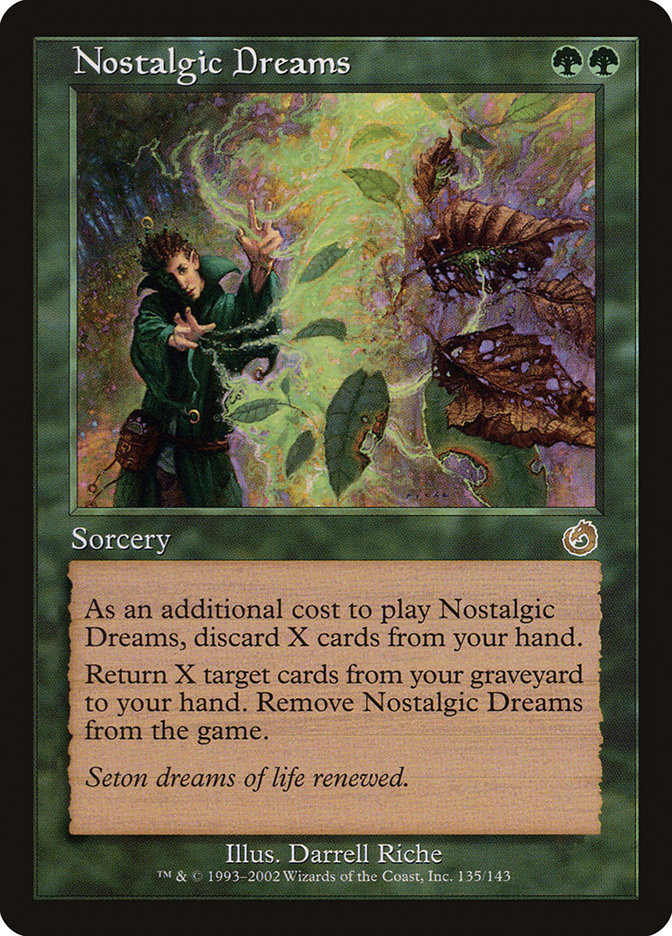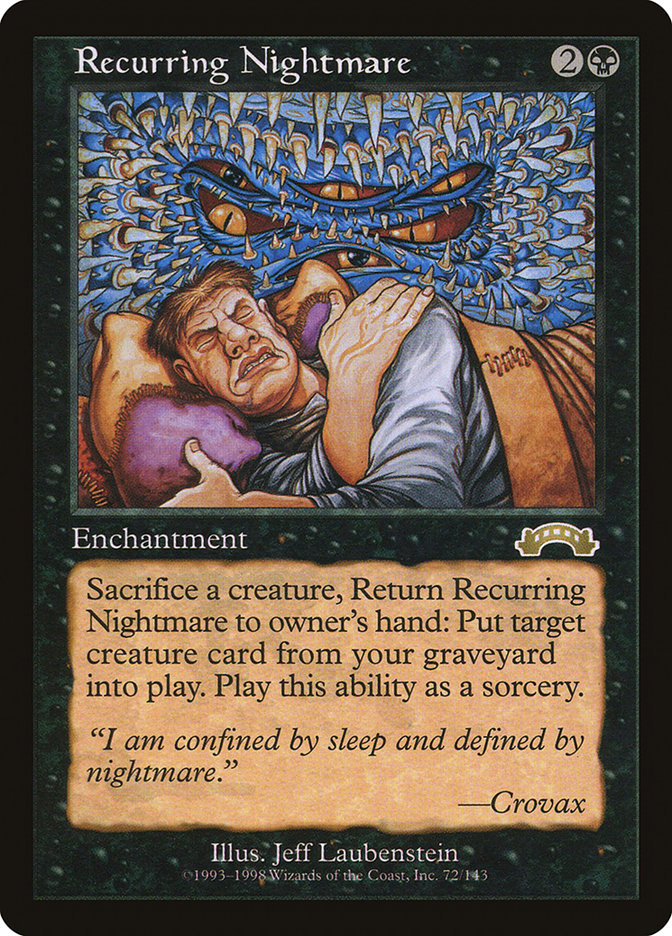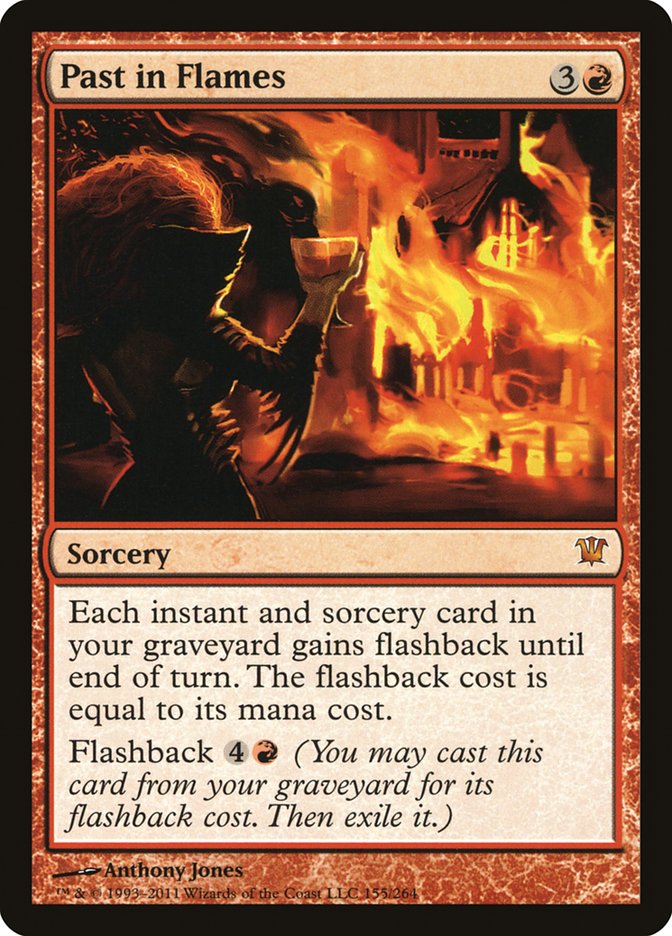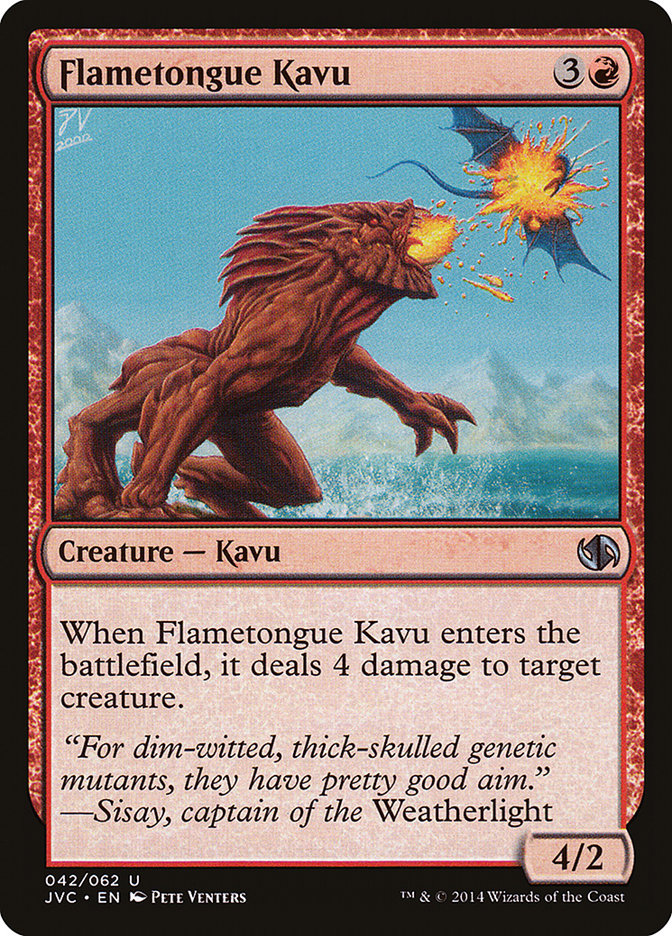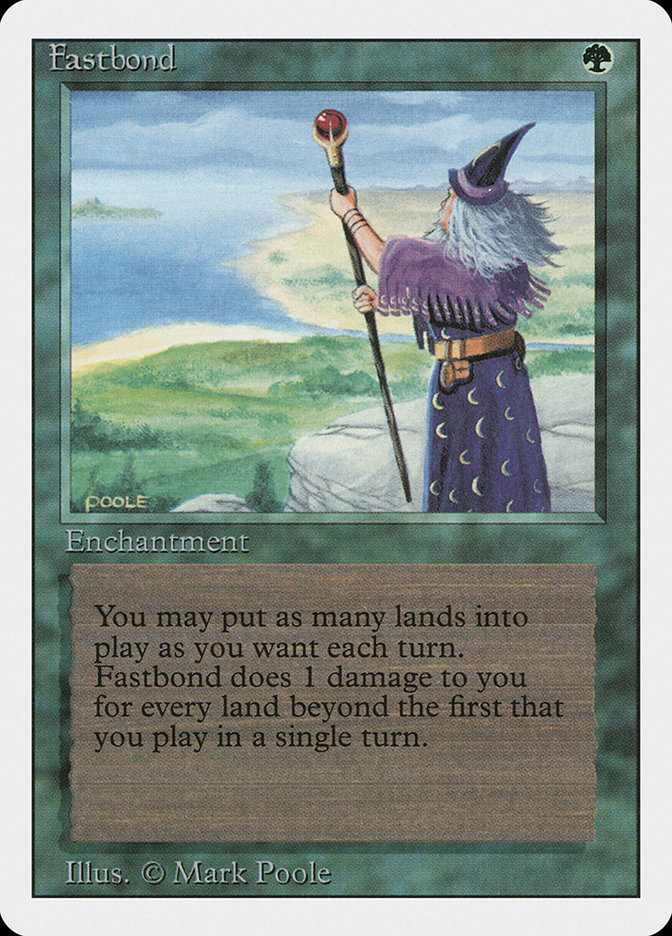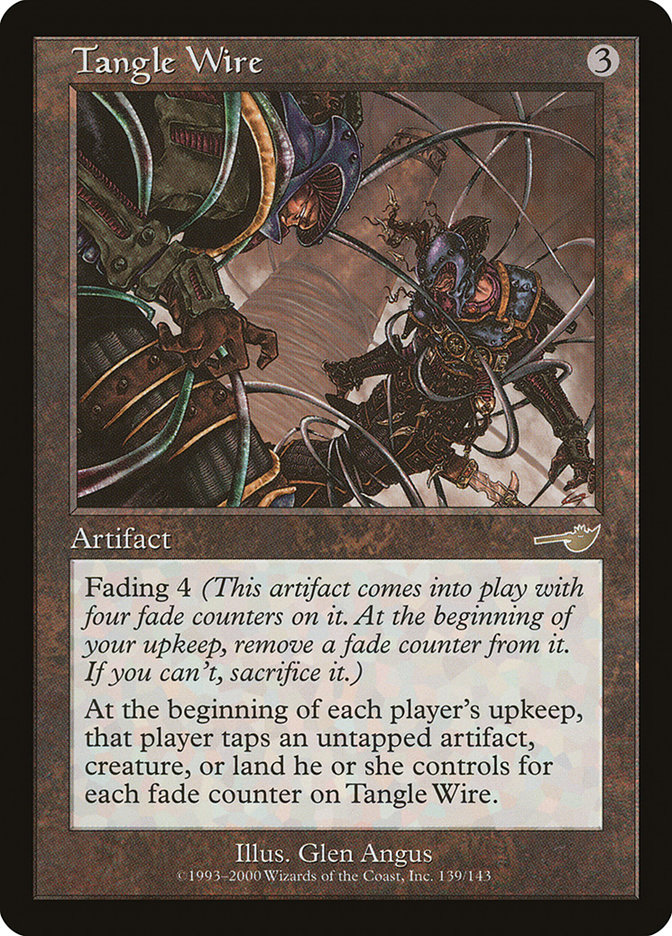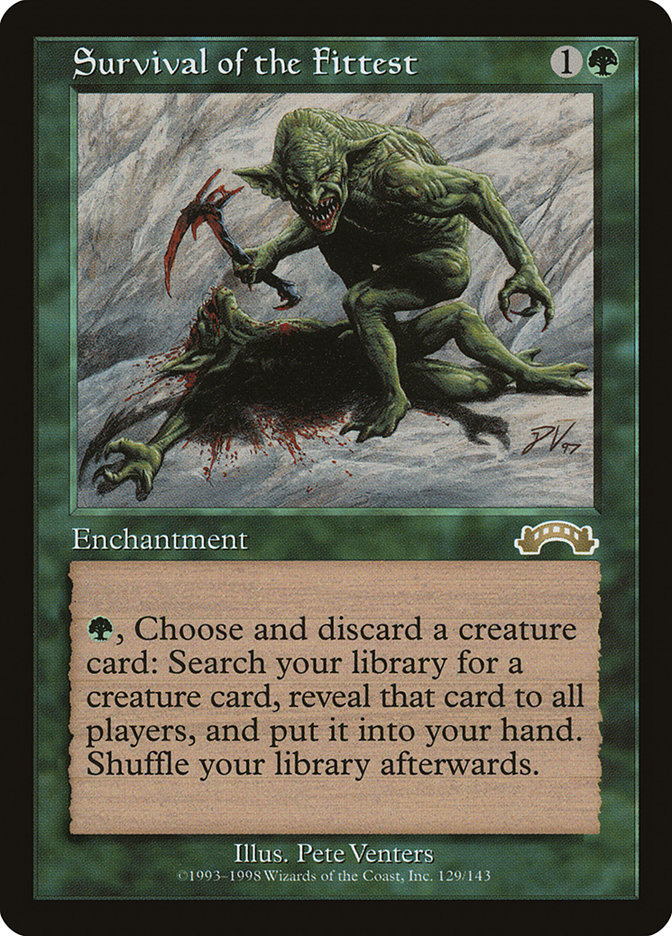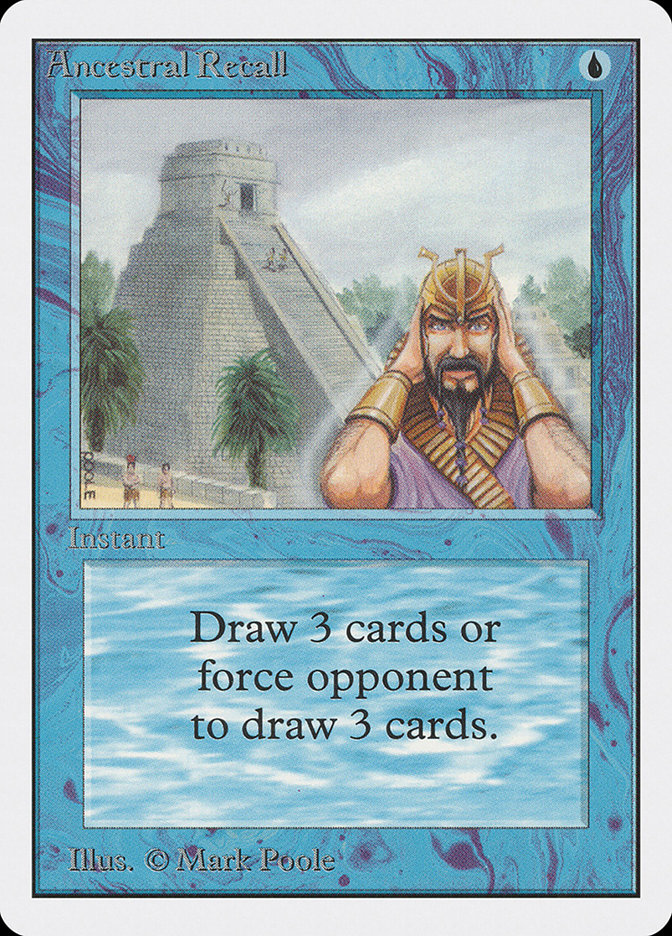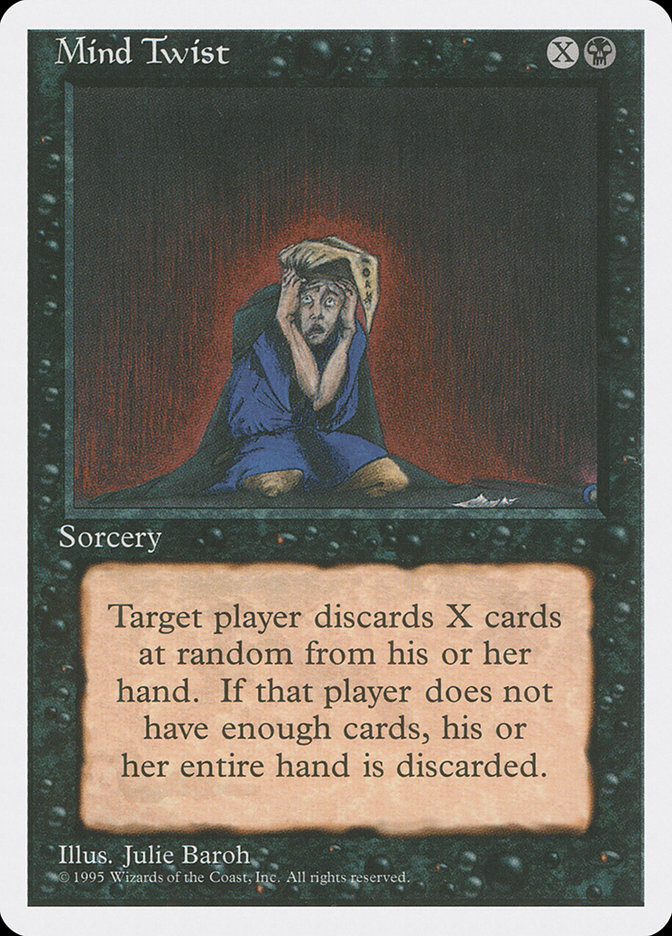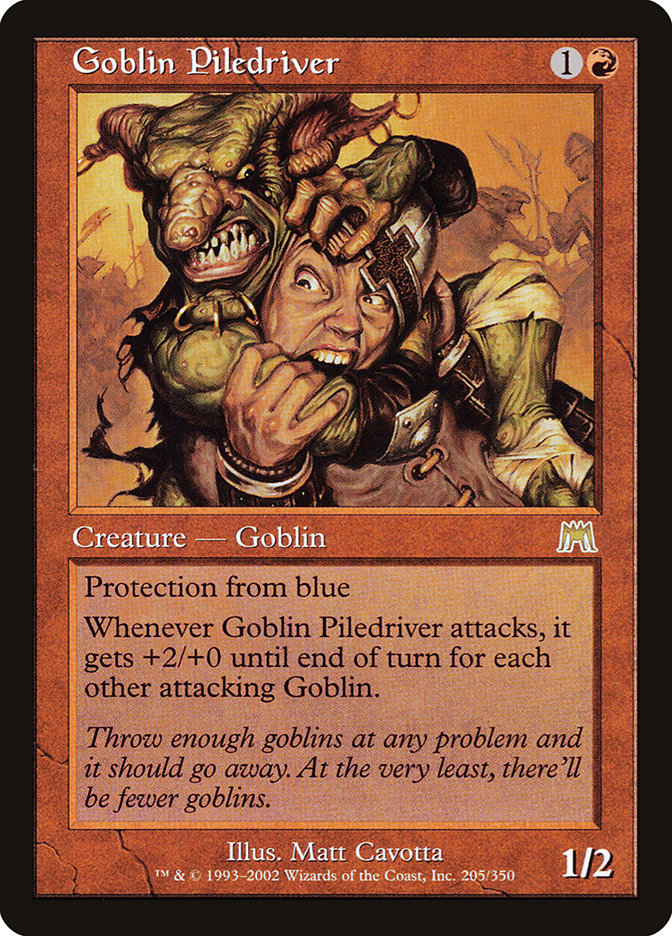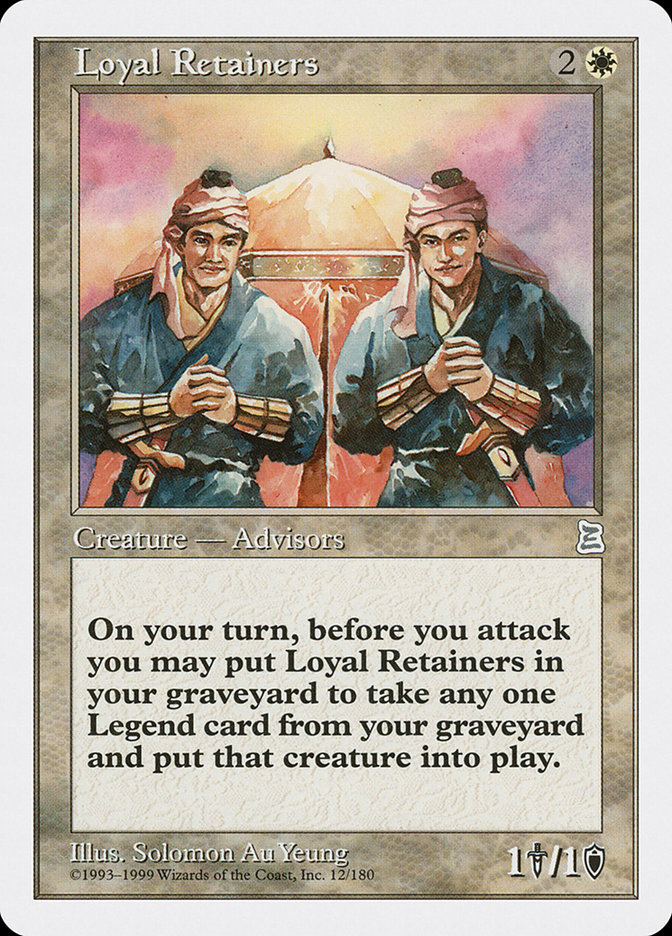Author’s note: This is the first in what is going to be a series of articles about both
Cube
in general and my own personal Cube. It will start with a rudimentary explanation of what Cube drafting is, and then get down to the philosophies that
dictate Cube design. If you are already experienced with Cube drafting, feel free to skip the first few paragraphs to get to the good stuff.
Last week
we had an awesome time reminiscing about our favorite cards, many of them relics from Magic’s long history. Everyone chipped in their own top 8 lists in
the comments and on Twitter, Facebook, and other forms of social media.
With every list being quite different, two things became very clear: There have been a metric ton of awesome cards printed over the years, and people
really enjoyed playing with them! All sorts of stories accompanied peoples’ #MyTop8Cards, with everything from crushing the lunchroom tables at high school
to qualifying for first Pro Tours.
The problem, of course, is that many of these cards have fallen by the wayside. Only a small percentage of Magic cards are even legal in Modern or
Standard, and an even smaller percentage of them are playable in Legacy or Vintage. While there are casual formats to play them in, there are often better
options, as a deck can only be so large. Some players also just prefer more competitive formats.
So what is one to do?
The answer, of course, is Cube Drafting.
To the uninitiated, a quick rundown:
A Cube is a collection of predetermined cards constructed for the purpose of playing Limited with. A Cube is usually booster drafted, but you really can do
anything you want with it: Sealed Deck, Rochester Draft, 2-player Draft variants, DC10, or even the massive ‘Rotisserie Draft’ where you draft the entire
Cube at once.
Most Cubes follow these guidelines:
- They are between 360-720 cards.
- They contain a ‘greatest hits’ style selection of the best/most fun cards in the game.
- They are singleton, meaning there is only one copy of each card.
- The entire Cube is sleeved in the same sleeves, as are a separate land box of basic lands.
- They use an even distribution of cards of each color and lands for a balanced play environment.
- They follow whatever theme the Cube’s designer chooses. A Cube could be based around a theme, be all commons, be only Standard-legal cards, and so on.
While some Cubes fall outside these parameters, this is a good baseline.
Okay, so… why Cube?
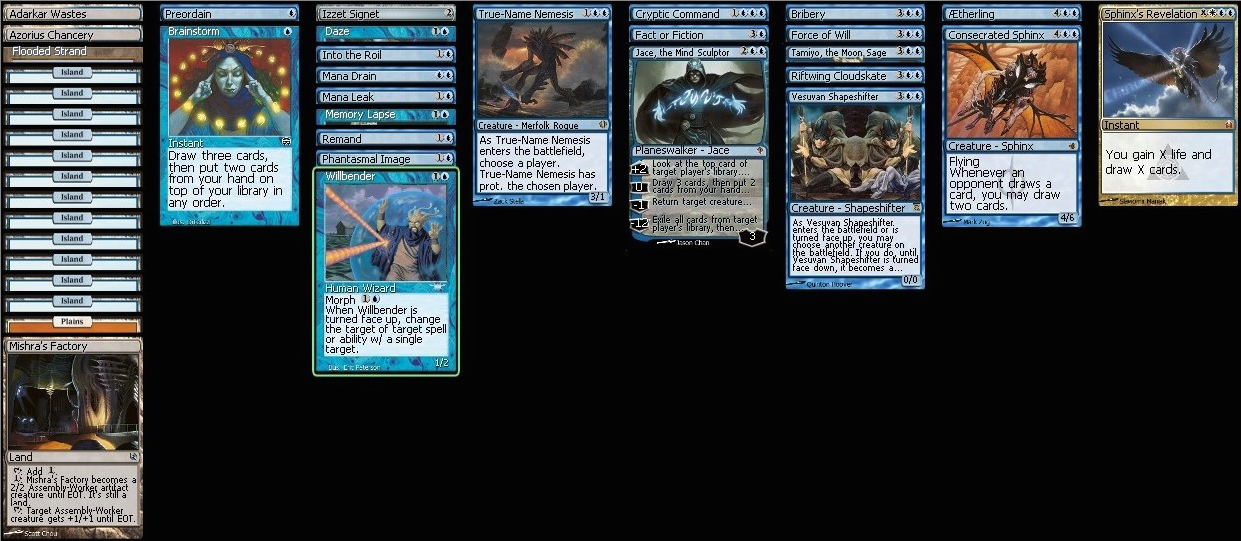
Because you get to play decks like this! Fact or Fiction! Memory Lapse! Vesuvan Shapeshifter!
Cube drafting fits in the perfect niche between Constructed and Limited, casual and competitive. Like a booster draft, it has almost unlimited
replayability, but instead of playing with vanilla 3/3 creatures for three mana and awkward five mana removal spells, you get to play with the most awesome
cards from all of Magic’s long history!
Honestly, it’s not difficult to convince someone to want to Cube draft, as it’s quite obviously a blast.
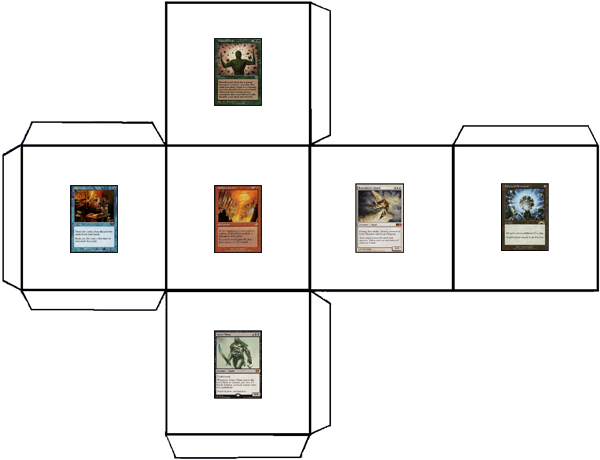
The complication (and fun!) comes from having to put your own Cube together. While back in the day this was quite the confusing and arduous process, these
days Cubing is fairly popular, and you can check out one of the many lists online, or even the official Magic Online Cube that is used for Magic Online
Cube drafts.
When constructing a Cube, you have a few important choices to make:
Size?
Sorry guys… despite what they might say, size does matter. Size is going to have a huge impact on how your Cube plays out. The smaller your Cube is, the
easier it is to control the environment and make sure certain cards show up.
If you have a 360-card Cube and do an 8-player draft, you know that every card is in play, and that both the Survival of the Fittest and the Recurring
Nightmare will both be fair game every single draft. This means you will have a fairly consistent environment, and not only will the decks your Cube
produces be consistent, but they will also be quite powerful. This makes it much easier to assemble combos and have very linear decks. The downside is that
a small Cube will have lower replay value – it can get tiresome and repetitive if someone has Survival/Nightmare every draft.
On the flip side, a large Cube will produce a huge amount of variation draft to draft, but this has the significant cost of making everyone’s deck weaker.
Naturally, as you add more and more cards, the best cards become more sparse, and it is much more difficult to assemble combos. This can create a sort of
‘kitchen sink’ feel, where there are just a ton of different cards and you hope you can cobble the right ones together to make a good deck.
Power Level?
One of the biggest questions a Cube designer needs to ask themselves is how powerful they want to make their Cube.
Will your Cube include the Power Nine? What about absurdly powerful restricted mana producers like Sol Ring? Or clear design mistakes like Mana Drain and
Skullclamp?
Including such powerful effects will make for some crazy games where you cast Jace, the Mind Sculptor + Time Walk on turn 2 and just run away with the
game. There are many truly broken cards in Magic, and effectively winning the game on turn 2-3 in a powered Cube is not an uncommon sight. This sort of
brokenness is not available to most Magic players who are used to things like Standard and Modern, and can be fun.
Of course, games like that tend to only be fun for one player, and it gets old after the first few times. Building a Cube puts you in the R&D seat and
gives you the responsibility of deciding what’s fun. Powerful cards are fun, but broken and one-sided games are not. At the same time, nobody is going to
get excited about playing a bunch of Gray Ogres and Shocks.
Power level is a very difficult factor to balance.
Format / Theme?
Of course, one way to curtail the power level of your Cube is to lock it in to a certain format or theme. Doing this keeps you at or below the power level
of whatever format you choose, and if you have newer players that are not familiar with old cards, it can make for a simpler experience.
Having a Cube that is Standard or Modern legal is very reasonable, but beyond that, you can really go crazy with all sorts of fun themes for Cubes. Tribal
Cube, Combo Cube, all multi-color Cube… one time a friend of mine actually built Mono-Colored Cubes for each color.
The best part about building a Cube is that you can really let your creativity roll.
Skeleton?
Once you’ve ironed these details out, you’ve really only just begun. You can now start to figure out what kind of skeleton you want to use for your Cube,
and that will look something like this:
- 50 Cards of each color
- 50 Multicolored cards
- 50 Artifacts
- 60 Lands
Which would give you a total Cube size of 410 cards. Sounds simple right? Well please tell me which sections these cards go in?
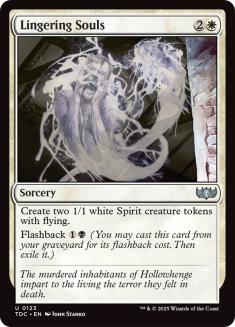
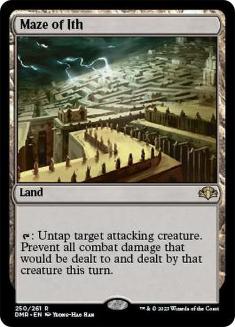
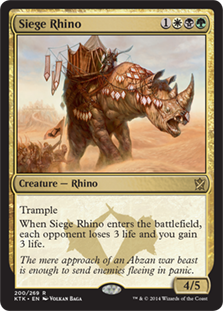
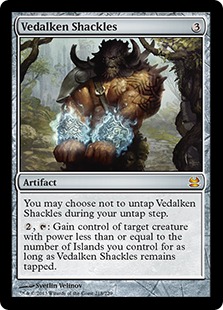
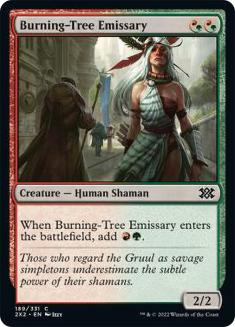

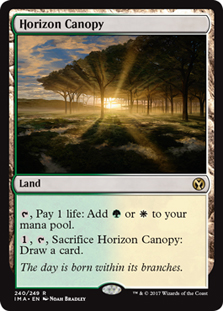
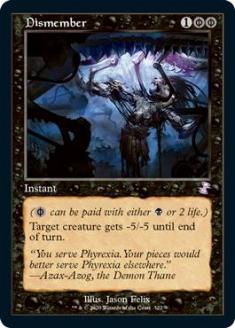

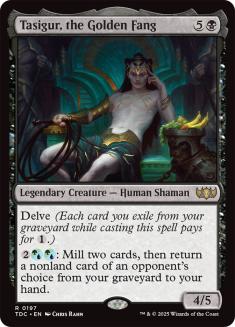
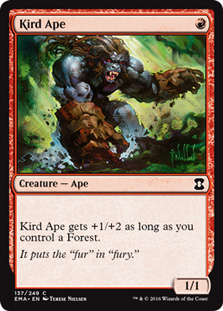

Not so simple, is it?
Deciding where these cards all go is an important part of constructing your Cube. Balance is very important, as is providing a good play experience.
Balance / Archetypes?
So we have a skeleton, and we start filling it in. If all your green cards look like this:
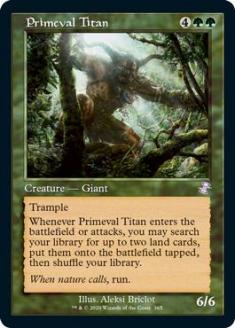
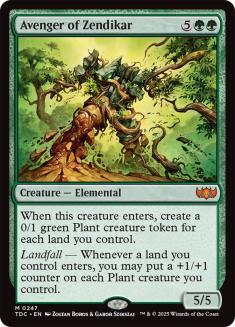
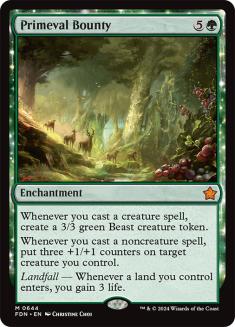
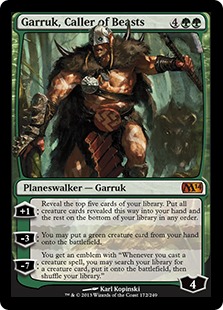
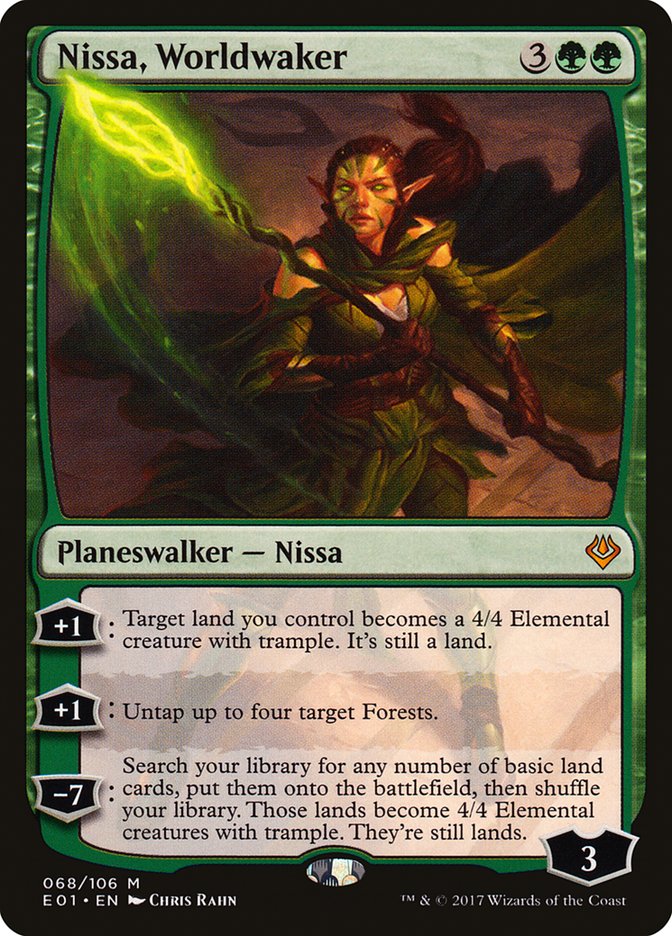
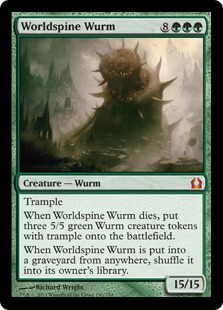

And all of your red cards look like this:
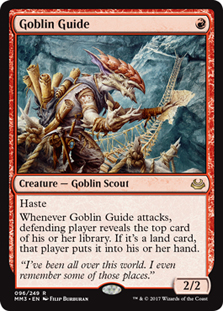

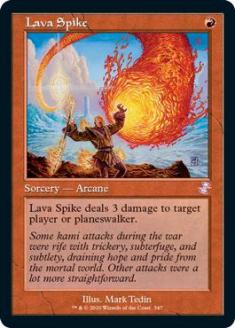
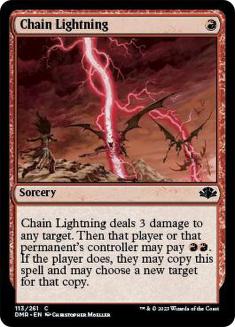
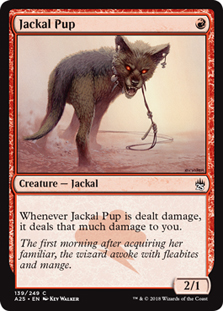
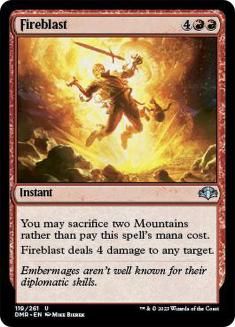

…Somebody’s gonna have a bad time.
(Hint: it’s the green drafter.)
It’s very important to make sure all of the colors have similar mana curves and enough cards to do each of the things that decks of those color need to do.
It is also important to make sure you don’t overdo a theme, because if one color has more focused themes than the others, then that color’s decks are going
to be better and more focused almost by default.
If your entire red section is one-drops and Lightning Bolts, all a player has to do is just take a red card every pack and they will end up with an
excellent deck. The same is true with virtually any theme in the Cube.
As a Cube designer, it is your job to also ensure that there are a good number of playable and overlapping archetypes available to draft. Nobody wants to
be the Goblin Guide/Lightning Bolt deck every draft (except for the truly cruel), so presenting a wide variety of options is very important.
You also don’t want to trap your drafters, however, by presenting them with archetypes that are not properly supported. If a drafter sees a Goblin
Piledriver, they are going to think that Goblins is a draftable deck; they are going to be really mad if they don’t see any Goblins for the rest of the
draft.
The Best Cube Ever Constructed
Today we laid out the basics, and next week we take a look at the best Cube ever constructed… mine, of course!
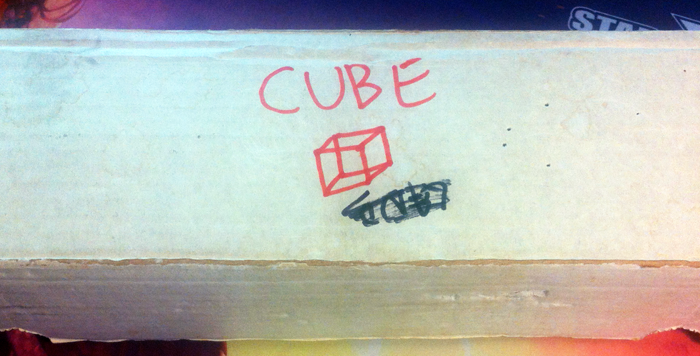
Well I suppose “best” is a subjective term, but my Cube has been a work in progress for the last seven or so years. It has been worked on tirelessly,
drafted hundreds of times in all different types of drafts, and been the subject of heated debate from many talented and knowledgeable players.
Why look at my Cube? Why not the Magic Online Cube, or one of many other player’s Cubes? Frankly, I think most iterations of the Magic Online Cube have
ranged from awful to somewhat tolerable, and that while people have gotten better at it over the years, most still misbuild their Cubes. Building a great
Cube is not easy at all, and I think I’ve done a rather good job of it.
I’ve laid forth all the questions for you today. Next week, we’ll begin to look at my Cube, and I will give you all of my answers.

